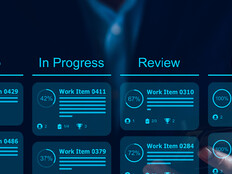Realizing ROI in Federal ERP Programs
Given the current budget environment and the Department of Defense’s (DoD) experience in enterprise resource planning (ERP), is now the right time to invest in IT solutions?
The Government Accountability Office (GAO) recently issued a report stating that several key DoD information systems experienced shortcomings in cost, schedule and performance. Change is needed, and now is the time to invest in the future by doing more with less. An ERP program is one way agencies can start saving while improving services. After all, ERPs are designed to improve functionality, provide detailed business information for program-level decisions and manage connections to stakeholders.
An ERP is not a replacement for an accounting system or a legacy IT system; rather, it is a business-process reengineering project. Limiting an ERP to simple accounting functionality decreases the full value of the implementation. Approaching ERP as an IT project can lead project managers to continue with “business as usual” rather than use the inherent capabilities in the product to update and improve their old processes.
Tackling ERP as a business-process reengineering project allows procurement professionals, program managers and IT specialists to formulate the right governance structure for ERP implementation, define and validate the requirements and enable more effective program management for the life cycle of the project.
Here’s a closer look at each of these three key benefits.
1. Defining a Strong Governance Structure
Stakeholder communities and complex, decentralized management guide ERP implementations, particularly within the DoD. Stakeholders ultimately define how the requirements are shaped, from the initial request for proposals, through implementation, and into sustainment. ERP governance strategies are frequently built on existing IT governance models, which often do not adequately engage all stakeholders or involve the end-user community.
For an ERP implementation to succeed, a governance structure must provide arbitration and facilitation to keep all stakeholders on task. Decision makers from across the agency should have a voice in the process, from the drafting of the initial contract to the implementation. Ultimately, a senior executive needs to lead and make the tough decisions on requirements and priorities. This leader must also provide guidance during discussions and resolve conflicts to ensure requirements are clearly articulated and aligned with the agency’s specific needs.
2. Enabling the Definition and Validation of Requirements
When ERP is viewed as an IT project, as opposed to a business reengineering project, contracts may be awarded to systems integrators who possess technical qualifications but lack valuable knowledge of business processes. This can result in months of back-and-forth between the project team and the integrator before an agreement on system design is reached. As the schedule slips, stakeholders and integrators may agree to a raised level of abstraction in order to gain consensus. This can lead to requirements that address the issue only at a high level. Ultimately, poorly defined requirements will result in increased costs and missed deadlines.
Defense agencies can avoid many of these pitfalls by utilizing organizational change management (OCM). This strategy connects the final product and its end users to ensure requirements achieve the stated goals. One example of OCM is the Agriculture Department’s ERP implementation, which successfully lowered life-cycle costs while staying on schedule and delivering value across the agency.
3. Improving Program Management
Even with a strong governance structure and clearly defined requirements, robust program management is required to make the ERP implementations a success. Approaching ERP as a business reengineering project puts the focus back on the agency and its users. Program managers should communicate what processes are changing and when changes are expected to occur. Managers must also ensure that users receive proper training; this encourages collaboration across the agency and empowers stakeholders to identify problems, solutions and opportunities for improvement.
Program managers’ central responsibility is to keep projects on budget and on schedule and minimize risk. These managers should employ a disciplined plan that incorporates the feedback of stakeholders. The plan should also allow for optimal staffing that ensures the right talent is matched to the right task. With stakeholder collaboration matched against a strong plan, quantitative reporting can identify and eliminate risks to the program’s success.
The Value of Successful ERP
In the current budget environment, agencies are being asked to perform at higher levels, with the same or fewer resources. A new approach to ERP could help agencies do more with fewer budget dollars. Comprehensive collection of data, for example, could be leveraged as valuable assets that help agencies forecast future events.
ERP improves data quality, reduces trouble tickets, optimizes cut-overs, identifies early and recalcitrant adopters, forecasts and refines budgets, reduces fraud and waste and improves financial performance. Agencies that use ERP data as an ecosystem can add new value, optimize operations and improve services to their end users.







